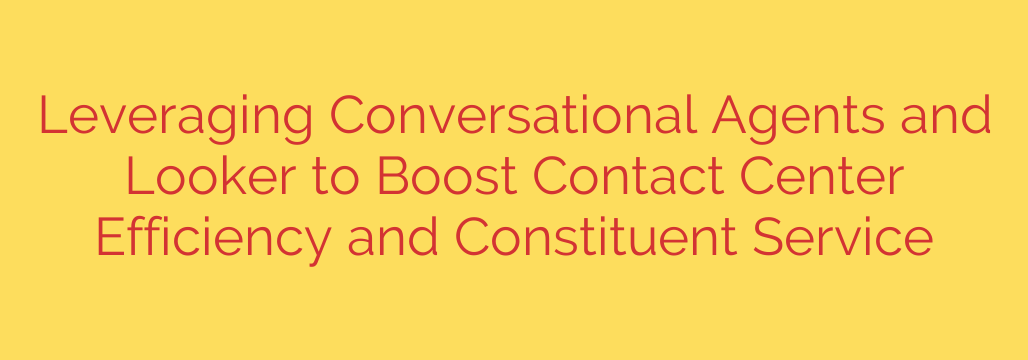
In today’s fast-paced environment, contact centers face immense pressure to handle high volumes of inquiries while maintaining high levels of service quality. Achieving both efficiency and exceptional constituent service is a critical challenge. Fortunately, advancements in technology offer powerful solutions to transform contact center operations.
One such transformative technology is the deployment of conversational agents. These AI-powered chatbots and virtual assistants can serve as the first point of contact, handling a significant portion of incoming inquiries. They excel at answering frequently asked questions, providing instant information, and directing users to the right resources or departments. By automating these routine interactions, conversational agents free up human agents to focus on more complex, sensitive, or nuanced issues that require empathy and critical thinking. This not only reduces wait times for constituents but also improves agent productivity and job satisfaction by offloading repetitive tasks. The 24/7 availability of these agents also ensures that constituents can get immediate assistance regardless of business hours.
Complementing the power of conversational agents is the strategic use of data analytics through platforms like Looker. While conversational agents handle interactions, a robust analytics tool provides the necessary visibility into contact center performance. By analyzing data points such as interaction volume, resolution times, common inquiry types, constituent feedback, and agent performance metrics, organizations can gain deep insights into their operations. Looker enables users to create dashboards and reports that reveal trends, identify bottlenecks, and measure the effectiveness of both human agents and conversational agents.
The synergy between conversational agents and data analytics is where the real magic happens. Data insights from platforms like Looker can be used to continuously train and improve the conversational agents, making them more effective at resolving issues autonomously. Analytics also helps identify areas where human agents might need additional training or support based on the types of escalations they receive. Furthermore, understanding constituent behavior and preferences through data allows organizations to personalize interactions and optimize workflows for maximum efficiency and satisfaction.
Leveraging these tools together leads to significant improvements. Contact centers can achieve reduced operational costs, lower average handling times, and a notable increase in first-contact resolution rates. More importantly, it leads to enhanced constituent satisfaction through faster responses, personalized service, and access to the most qualified support agents when needed. Ultimately, integrating conversational agents and powerful data analytics provides a comprehensive approach to building a more responsive, efficient, and effective contact center that truly meets the demands of modern service delivery.
Source: https://cloud.google.com/blog/topics/public-sector/how-conversational-agents-and-looker-can-boost-contact-center-efficiency-and-enhance-constituent-services/








